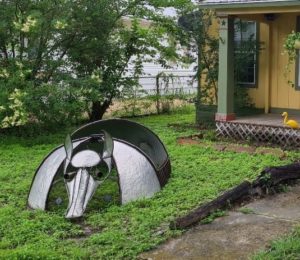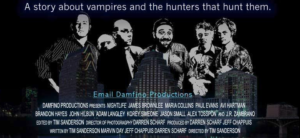–In 2005, two vampire mockumentaries first saw daylight – one was an indie feature film shot in Austin starring my brother that made it to the film festival circuit, the other was a short film that nine years later became What We Do in the Shadows, a hit film and eventually an FX series. Nightlife never quite made it out of the shadows, but the film and the Austin of 2004 that it depicts remain immortal.
By Ben Hartman
He may be murdering and eating young women at a bar in downtown Austin, but the man on screen is still my brother.
My older brother Avi Hartman was one of the stars of Nightlife, a feature-length vampire mockumentary that was filmed entirely in Austin in 2004 and had its official premiere at the 13th GenArt Film Festival in New York in April 2008. Avi plays a Jewish vampire named Avi, who hangs out and hunts his prey at the Whisky Bar on 5th street when he isn’t working the night shift as a paramedic (one of the few jobs in Austin my brother has not had), a gig that gives him easy access to blood.
Avi is one of a group of six vampires that live together in a house in South Austin and try to make ends meet in the 2004 version of the city. As one of the movie’s taglines said – “300 years, and they’re still living paycheck to paycheck.”

Other than Darren, the vampire who owns the house and is a successful businessman (one of his properties shown on screen is the former Side Pocket pool hall on North Lamar), the vampires seem like the type of young guys I remember in Austin 20 years ago.
Or, as a 2008 blurb in Fangoria explained it, the film provides “a glimpse into the lives—or lack thereof—of modern vampires and their hunters. These bloodsuckers litter the Earth pretty much the way we mortals do: watching bad TV, dressed in simple clothes (no capes, sorry), and more concerned with paying the rent than battling Buffy wannabes. The slayers themselves are just a bunch of comic-book geeks on a quest to fulfill their fantasies as civilians turned Van Helsings, taking a page from The Lost Boys.”
These vampires are not the high-tech “creators,” “disrupters,” and “innovators” who are flocking to Austin in 2022. Rather, they are vampires who could still afford to live in Austin in 2004. Vampires who would have hung out at Lovejoy’s or Mojo’s, who may have worked the door at Emo’s or in the kitchen at Magnolia Cafe. They are vampires who seem doomed to move to Lockhart once they are priced out of Austin.
But beyond that, they are the stars of a vampire mockumentary that may just be the most Austin movie I’ve ever seen.
- A 2004 Austin Time Capsule
Like Dazed and Confused, the word “Austin” is never mentioned in Nightlife, but it can feel like a moving gallery of local landmarks, some gone but not forgotten.
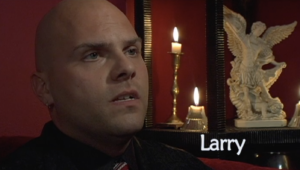
When the D&D kids who Live Action Role Play (LARP) as vampire hunters prowl downtown at night, the original, long since closed Alamo Drafthouse theater on Colorado street appears in the background. There is a shot of Avi and his roommate Larry (a stickler for the vampire aesthetic who sleeps in a coffin and insists on being called Laurencio) walking out of the Continental Club, where my brother and I went for my 21st birthday. A Star Trek-themed funeral is held atop Mount Bonnell after (SPOILER) a vampire hunter is turned to a smoldering puddle of goo outside the former Rainbow Cattle Company on 5th street. And in perhaps the most Austin moment of all, as the credits roll at the end, “Nightlife” by Willie Nelson begins to play.
There are also much more personal Austin cameos. In some of the movie, my brother is wearing the green Zilker Zephyr t-shirt that I lost a few months before shooting began for the film. My dad’s old Lazy Boy appears as vampire furniture, and in one scene, Avi has a fight with his human ex-girlfriend Sarah outside the Diablo Rojo Tattoo studio on Guadalupe, where I got a tattoo my brother drew for me inked on my back in 2004 (the Texas state capitol building inside a giant Star of David. I was 25).
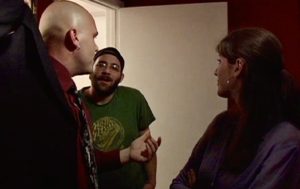
Austin of 2004 can also be seen in a promo poster for Nightlife which I found on an Italian vampire films website. The poster shows the vampires standing below a full moon in front of the old Austin skyline before even the Frost tower was built.
In a blog post from April 2008, the author – an old friend of my brother – describes him as “Austin celebrity Avi Hartman” and “the famous comedian and metalworker.”
Hitting even closer to home, the writer states that while Nightlife is “a documentary about vampires and young people in Austin, Texas,” it is also “mostly a documentary about our fondest memories of our hometowns.”
For me, especially since I left Austin and moved to Israel in 2004, my hometown memories have largely been tied to my brother and his art.
There are the signs he welded for the Epoch coffee shop on North Loop and the Peddler Bike Shop on Duval. Or “the Carmadillo,” the armadillo-shaped go-kart that my brother built and which was featured on the cover of the 2008 “Best in Austin” issue of the Austin Chronicle.
And then there was Nightlife, in my eyes, his biggest acting role since he played the lead in The Hobbit at McCallum High School. It was a shining achievement by the most talented guy I’ve ever known, and it was shown one night at my dad’s house, at a few film festivals in 2008, and then it vanished into the night, leaving just a trailer behind, at least as far as I was concerned.

Then, in August 2014, the same month our dad died, a big(ger) budget vampire mockumentary made its theatrical release.
- The Other Vampire Mockumentary
“Anytime anyone wants to fuck with me, they bring up What We Do in the Shadows,” Nightlife director Tim Sanderson said in November.
Sanderson recalled how in 2014, 6 years after Nightlife made its debut and felt the rush of film festival buzz, the calls started pouring in.
“My Facebook, my texts, everything blew up. This is before it came out when it was announced. And everyone was like, “dude, do you know about this film?”
Sanderson said some friends of his who had seen Nightlife began to go down the rabbit hole, trying to figure out if What We Do in the Shadows filmmakers Taikia Waititi or Jemaine Clement were at the GenArt film festival in 2008 and saw Nightlife “because as far as the movie goes, there are an incredible number of similarities between that movie and Nightlife.”
Before its theatrical release, Tim said that he and three of the producers of Nightlife bit-torrented the film and watched it one night in silence.
“We all just watched it, shaking our heads. The jokes might have hit better if we didn’t have this previous experience.”
But as he reminisces, the resentment and the speculation begin to temper.
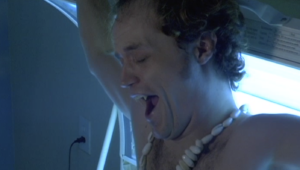
“I put it this way, if George Lucas didn’t think of the lightsaber, somebody would have. When Nightlife came out, there were a bunch of vampire movies coming out that could have inspired somebody to make a comedy about vampires.”
Mainly though, Sanderson – an admitted fan of Taika Waititi and his non-vampire work – points to the fact that Waititi and Clement filmed and released a 30-minute short film called “What We Do In The Shadows – Interviews With Some Vampires” in 2005, which as of the writing of this post neither he nor my brother had seen.
“People have told me you should be mad, and you should be this, I don’t see any benefit from it, from doing anything negative. If Taika offered me just a conversation over a cup of coffee and we both laughed over it, that would be good.”
The passage of time probably also helps a bit.
- A Tale of Two (or More?) Vampire Mockumentaries
It should be noted right off the top that Nightlife and What We Do in the Shadows are quite different.
The biggest difference is arguably the vampire hunters storyline. They share the screen more or less just as much as the vampires in the version of Nightlife I saw, while in What We Do in the Shadows, there is only a single vampire hunter who manages to kill Petyr before being crushed by the door of the 8,000-year-old vampire’s basement tomb.
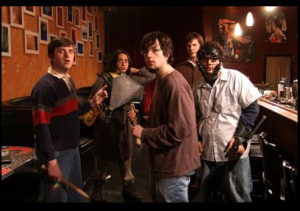
Unlike in What We Do in the Shadows, the vampires in Nightlife cannot fly (“we didn’t have the budget for flying,” my brother said), they don’t transform into bats or other animals, and they aren’t on a quest for virgins. They also don’t speak with faux European accents. They are not at all bothered by crucifixes (except for in one scene, when a vampire hunter pulls a crucifix on Avi, who responds that he is Jewish and “you know what, that’s anti-Semitic!” in one of the more memorable lines in the movie). There are also no werewolves, though the original script did include an ending in which the werewolves come to the vampire house, much like the actual ending of What We Do in the Shadows.
Nightlife does include several elements that were not in the 2005 What We Do in the Shadows short but did appear in the subsequent 2014 feature film. There was no human “familiar” in the 2005 short, though in Nightlife there is Kyle, a stoner who cleans up after the vampires and gets high and lets the vampires drink his blood, which is described as the only way vampires can get high (“he’s basically our bong,” Avi says).
There is no ancient, Nosferatu-Esque vampire in the 2005 What We Do in the Shadows short film, while Nightlife did have the mysterious, silent Harpo. Like Petyr from the 2014 film, the other blood-suckers are a bit afraid of Harpo, who “picks up the stragglers” that get away from the other nightcrawlers. Also, in the 2005 version, Jemaine Clement is named Vulvus, becoming Vladislav (“Vlad the Poker”) in 2014. Nightlife did have a Vlad, or “Vladdy,” a vampire who moonlights at a kebab stand on 6th street and is, in fact, Vlad “Vlad the Impaler” Tepesh.
There is also a vampire-human relationship in Nightlife and the 2014 version of What We Do in the Shadows. The 2005 short and Nightlife had similar taglines – “Eternity Sucks” and “Being a Vampire Kinda Sucks,” respectively.
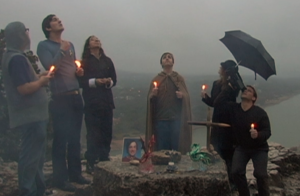
However similar or different the two films are, and no matter how much success and acclaim What We Do in the Shadows has received, Nightlife will always remain – as far as I can tell – the first feature-length vampire mockumentary released. (The Belgian vampire mockumentary Vampires was only released in 2011)
Also, while Taika Waititi and Jemaine Clement are big stars in 2022, the making of the ($1.6 million budget according to IMDB) 2014 film was not some case of Hollywood getting behind a juggernaut. The truth may be a bit closer to that of Nightlife.
- Independent Vampires
What We Do in The Shadows failed to make a big splash upon its limited release in 2014, and Clement and Waititi turned to Kickstarter to help garner support for stateside distribution. The campaign raised more than $440,000 and described the film as “a first-of-its-kind documentary” (narrator: it was not) before telling would-be supporters, “it’s time Americans learn the truth about the vampire community – but we can’t do it without you.”
In a Q and A from before the premiere of What We Do in the Shadows, the filmmakers both said they loved vampire movies growing up – with Waititi mentioning Lost Boys in particular. In a 2014 interview, Clement described a gang he started at school at age ten called the Vampires and how “after school, we would get those plastic teeth and ride around on our bikes speaking in Transylvanian accents and try to scare local kids.”
In the same interview, Clement describes how he and Waititi’s time spent together as comedians in New Zealand laid the groundwork for the film, in particular a recurring vampire bit they would do on stage.
“Taika suggested we make a mockumentary. He was thinking about making a documentary about something you couldn’t actually document, you know, like an alien invasion,” Clement said.
The pair created the 2005 short to test out the idea, which served as the basis for the feature film they began making in 2012.
(Neither Waititi nor Clement responded to emails sent to their agents.)
- Vampires in Allandale
The first time I was supposed to have seen Nightlife was on October, 21st 2005. The night started at a fundraiser held at my mom’s house in Austin for the gubernatorial bid of Kinky Friedman, an old Hartman family friend and fraternity brother of our late father.
“Kinky Kocktails” was a success, but I got drunk at the fundraiser and was barely among the living by the time I got to my dad’s house in Allandale later that night for a screening of Nightlife.
I remember nothing of the screening party or the movie. In the years to come, all I had was a link to the Nightlife trailer, which I would watch every once in a while, or show to a friend or colleague in Israel if they asked if I had any siblings.
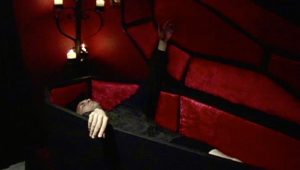
That is until I was in Austin in November, and my brother and I got to talking about the movie. The trigger was that our mom suggested we “watch this vampire comedy movie” on Netflix, to which we both answered with some variation of (mock?) outrage. At that point, neither of us had seen What We Do in the Shadows. But over the past decade or so, on opposite sides of the world, we had both, on many occasions, mentioned that Nightlife came first.
That night I also learned that Avi has had a copy of Nightlife in his Google Drive for at least a decade (we don’t talk as much as we should).
I watched it the next day after I left back to Israel, catching glimpses of the city I’d left two decades earlier and the big brother I remember prowling Austin in our 20s. I saw Avi captured as he was at the very time I moved to the other side of the world and started to tear up in the departure gate.
- “We Did it Backwards”
In hindsight, Nightlife arguably had a real chance to be a breakthrough film. It was shown at GenArt in 2008, when Twilight was still the biggest force in American publishing, just seven months before the first “sparkly vampires” movie would become a blockbuster hit. This was also the same year in which a mockumentary comedy – The Office – averaged more than nine million viewers a week and that the vampire show True Blood premiered on HBO.
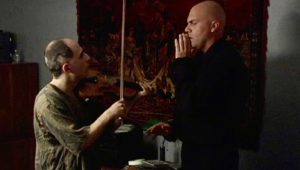
The Nightlife origin story begins in 2003, after Sanderson, who grew up in San Antonio, moved back to Austin from New York. A feature he tried to make in New York hadn’t panned out and Sanderson was feeling depressed. (he was 22, and Austin filmmaker Robert Rodriguez “was 23 when he made El Mariachi and I wanted to beat Robert Rodriguez to make my first feature”) He bumped into his friend and future Nightlife crew member and co-writer Marvin Day, and the two went for a beer at the Whisky Bar, where he told Marvin about his idea for a short film about a group of 5 or 6 vampires sitting around playing poker and talking.
“I mentioned Nightlife, and I think Marvin said dude we could do this as a mockumentary and it’d be cheap as fuck,” Sanderson said, adding that “I remember this speech he gave me at Whisky Bar in 2003 and he said like “dude we could just talk to a bunch of improv actors and pull out cameras and have this whole thing shot in just two months from now. And….yeah, we had our premiere in 2008.”
Sanderson said that the budget for Nightlife was $30,000, which they secured from old friend and Nightlife crew member Darren Scharf’s parents. Scharf said that his parents didn’t provide all of the funding but that they wanted to help out because “my sister was starting a business at the time and they were like we want to help you both, and you want to make a crazy vampire movie.”
In late 2003 the filmmakers did a casting call at the Dougherty Arts Center on Barton Springs Road, and about 200 people showed up.
Sanderson said that my brother had turned them down when they first approached him about being in the movie. He said that while the role appears to have been written for Avi, he had actually already written the character of a Jewish vampire in the script, with one big problem – his name was Reggie.
“Reggie would translate to Reginald, and we thought, Reginald isn’t a really Jewish name, so like, we needed a Jewish name, so we started tossing around names, and they all kinda sucked, so I called up Avi and was like I know you said you can’t be in the film but do you mind if we use your name because there’s this vampire in the film who is supposed to be Jewish, but we can’t think of any good Jewish names,” Sanderson explained.
They then held auditions for the role of Avi, “and all of them sucked, and then on the last day of casting, Avi showed up and just fucking nailed it.”
Over the course of 2004, they would produce reams of footage, including three feature-length versions – one of which has an alternate ending in which my brother is killed by one of the documentary cameramen.
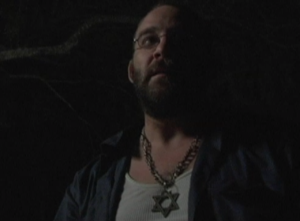
By 2007, they started trying to get the movie into festivals. Sanderson said they missed the cut for the 2007 SXSW film festival but took part in a mentor session, where he met Jeff Abramson, the organizer of the GenArt Film Festival. Sanderson showed him the trailer for Nightlife, and the rest is history.
Sanderson and the producers showed the trailer to many people back then, but two stick out in Sanderson’s head.
“I showed it to Paul Rudd and Jason Segal. They were at South By, I think I Love You Man was going to be there,” Sanderson said, describing how he showed the actors the Nightlife trailer on a balcony at the Austin Convention Center.
Nightlife would eventually feature at a series of festivals in 2008 and 2009, including the Vampire Film Festival in New Orleans in 2008, the Bram Stoker Film Festival in Whitby, England in 2008, and the Rhode Island Horror Film Festival in 2008, among others.
To this day, Sanderson says he knows where they went wrong.
“We all knew how to make a film and how to make a film for cheap, but none of us knew what to do with a film after it was done.”
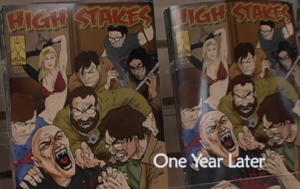
He said they got approached by producer’s reps before they started going to film festivals and turned them down, thinking that they should first go through the entire festival circuit “and then we’d get a producers rep and then say ‘hey look at all these accolades we have now, please represent us and try to sell us.’ Which is completely the wrong way to do it.”
Sanderson said he went to three festivals where Nightlife was screened in the year after its release, after which things basically went silent. The movie itself was never posted online in its entirety because the filmmakers never received the rights to use the music in the soundtrack.
“It just kinda died out, and I didn’t know what to do, and I got depressed, and it was like this weird thing where I was getting depressed and would say fuck it, and I’d try to write my next thing and say let this be a lesson about what not to do.”
But back in April 2008 in New York, Nightlife held the spotlight, if only for one night.
- New York Nightlife – The 2008 GenArt Film Festival
In a video shot at the GenArt Film Festival in April 2008, Sanderson describes sitting at a bus stop years earlier and seeing an ad for a vampire video game in which a female victim had bite marks on her windpipe that seemed of limited utility for blood draining.
“And I thought, well, that’s gonna happen if there were real vampires, the newbies would miss veins and like they’d have problems getting their driver’s license because the DPS is only open during the day.”

Later in the video, the cast and crew can be seen carousing on the subway and at an after-party at a club somewhere in New York.
There look to be at least a dozen guys from Nightlife at the front of the room taking questions, part of what left an impression on then GenArt Vice President, Film Festival Director Jeffrey Abramson, even more than the movie itself.
“It was not just this film, but the creative and ambitious energy of the cast and crew “family.” How they pulled it together and also showed up and evangelized when it debuted. They brought the party to our parties that year,” Abramson said in a message sent on LinkedIn.
He also described how the Nightlife delegation stood out from most of the filmmakers at the festival, who mostly sent one or two people from the crew and/or cast and would attend the screening of their film. Instead, Abramson said the Nightlife guys were at the festival all week, attending every screening and making sure to support all the other films at the festival.
Or, as my brother put it, “we partied harder than anyone else. I remember the screenings had free Stella that ran out at the end of runtime. So everyone in our cast would go to the bar and just fill our shirts with beer to take back to our seats. At every single screening. People thought we were crazy.” (there is clear footage of him in the GenArt video holding two Stellas in one hand)
- “Ask for Forgiveness, Not Permission”
In the second scene of Nightlife, Assistant Director Christian Bazan plays a paramedic with blue hair pushing a gurney into an ambulance while Avi talks to the camera about being a vampire.
Bazan and Avi were classmates at McCallum High School and had collaborated earlier on a short film shot partially at my dad’s house for the 48-hour film festival in 2004 and the independent zombie movie “Day X” (originally titled “Citadel of Flesh”) shot in Austin. Bazan was then part of a film collective in Austin called “Monkeys Among Us,” which he described as “this little group of six guys that could mostly do anything.” This included work on Bad Vibes, a short film about the dildo laws in Texas.
Tim Sanderson was one of the directors of photography on Day X, and in late 2003, Bazan said Sanderson approached him and “they were wanting to cast Avi, and they had this idea for a vampire mockumentary.”
Bazan said he was present for almost all of the film’s principal photography, which required a combination of favors, improvisation, and some chutzpah to make up for the lack of shooting permits.
“I remember there were all these “it’s easier to ask forgiveness rather than permission types of things, where we had a connection with somebody, and they were like, well, I’m not going to tell my bosses, and we’ll just do it.”
This includes the night they shot the EMT scene outside Seton Hospital (“I think Darren knew somebody who worked as an EMT who let us shoot there one night in the back”) and the scene where a vampire hunter explodes on the pavement on 5th street.
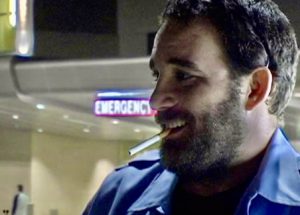
“It was fake blood that had been made and then some nasty smelling offal bits from a butcher shop, and we threw it off the roof,” Bazan said, clarifying that “we cleaned up all that stuff and didn’t ask the city we just did it. I always had a clipboard and release and official-looking paper, and I’d say hey, we’re shooting this thing, you know, get people to sign stuff or redirect cops.”
There was also the time they borrowed a wheelchair from a nearby H-E-B when they needed to do a dolly shot, Bazan added.
Darren Scharf related how the crew didn’t have a permit to shoot a scene where Avi is shot by his ex-girlfriend in an alleyway off Red River in the heart of downtown and had to improvise.
“Thirty minutes before we were going to shoot it, I just walked into the police station on 8th street and said, ‘hey, here’s what we’re planning to do,’ and the guy is like ‘what? You want to fire a gun on a Friday night on Sixth Street,’ and he says, ‘ok, hold on a second, I just sent two officers to monitor you guys.’”
The crew went ahead with the shoot, come what may.
“We’re like popping off blanks next to packed streets right there, and people are jumping because they hear gunfire, and the cops are just kinda laughing and waving. They were loving it,” Scharf said.
This was in keeping with the vibe of the entire filmmaking process, Scharf said.
“We ran it guerilla-style, shot stuff in the street without permits, just a bunch of weirdos walking down the street with vampire stakes and things like that.”
Regarding What We Do in the Shadows, Bazan “I don’t see them as having done it maliciously if there was any overlap at all, it’s just a weird coincidence, and its weird how much attention and how popular it was versus Nightlife which was obviously lower budget but still worked well with what it had,” Bazan said.
He added “I really thought that Avi would get discovered out of that.”
As for Avi, he said he thinks Nightlife “could have only taken off when it was filmed. I think if we released a movie like that now, where the characters throw a party at a bar where they kill a bunch of women they pulled off the street, it wouldn’t go over well.”
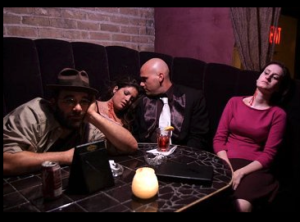
He added, “there’s some deeply problematic stuff in the movie I was in, a movie that I’m really proud of.”
Looking back, he also thinks the crucifix joke (“that’s anti-semitic”) is “a bit too obvious,” but he gets why people like it.
Overall, he said a movie where a bunch of vampires who look like white men in their 20s murder women at a place called the Whiskey Bar seems like “a thing you could do at the ass end of the 90s, early 2000s,” and that for viewers in 2021, “you have to be prepared to like the blackest of black comedy to like it.”
- Life After Nightlife
The web series was a sort of last attempt to get exposure for the film, years after its initial release. After the festivals in 2008 and 2009, the first episodes of Nightlife the series were released in 2011 with an initial run of eight 5 to 7-minute episodes, mainly focused on the vampire hunters. The second season was meant to focus on the vampires themselves, with footage repurposed from the shooting of the 2008 film. As per the admin of the Nightlife YouTube page, a third season was to be focused on the interaction between the hunters and the vampires.
Tim Brownlee, the actor who played Larry/Laurencio the vampire, has several other acting credits following Nightlife, including as a henchman in the 2010 Danny Trejo film Machete. Paul Evans, who played vam
pire hunter Andrew, has since had a lengthy resume in acting, directing, and writing short films. Brandon Hayes, who played Darren the vampire, went on to act in two episodes of Mad Men the same year that Nightlife was released. More recently, Korey Simeone, who played the mysterious vampire Harpo, had a speaking part in a skit in the internet-famous “Hot Dog Car” episode of the comedy series “I Think You Should Leave with Tim Robinson” in 2019.
Tim Sanderson is still in Austin and is currently working on two fantastical comedy short films and a feature-length horror. It will not include vampires.
Christian Bazan is a marketing professional in Austin and is still working in film, including on a documentary he’s developing about labor issues in video games. Darren Scharf is still working on film projects and a plan to launch a “permanent sustainable theater” for community theaters that have been priced out of Austin.
My brother is an electrician, artist, and musician now living in Lockhart.
He has still not seen What We Do in the Shadows.
